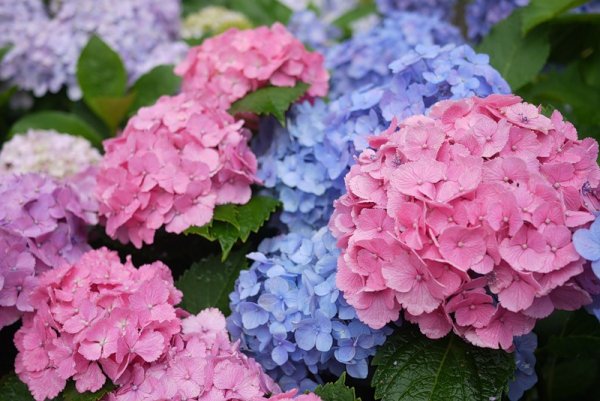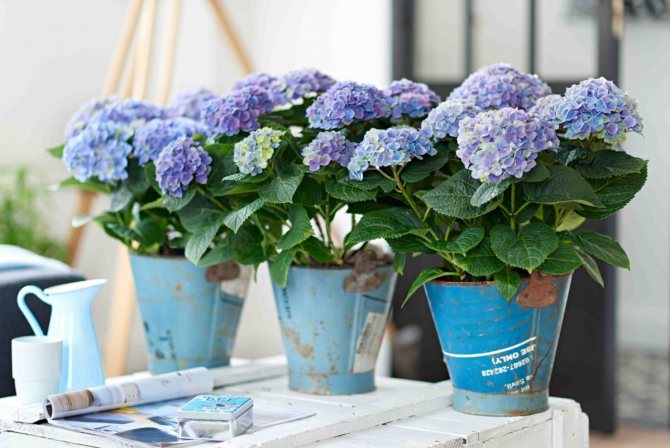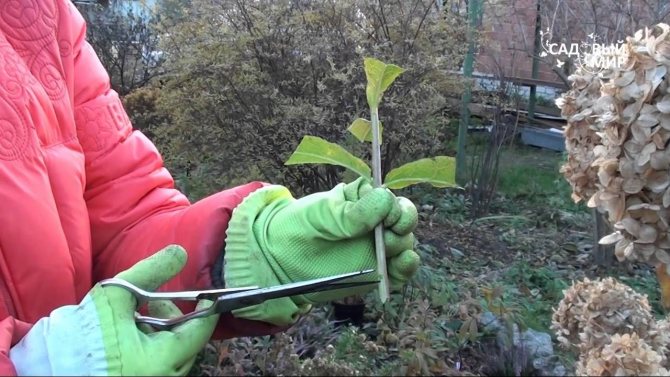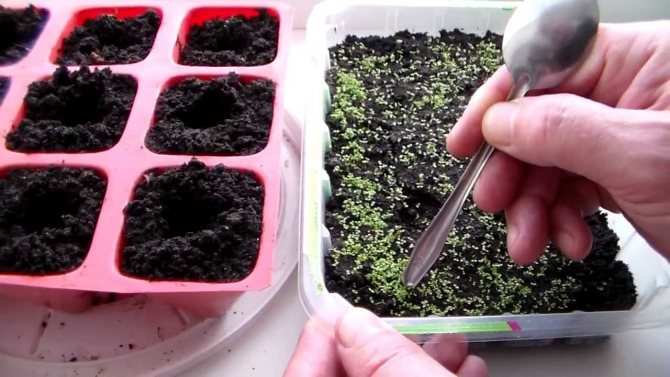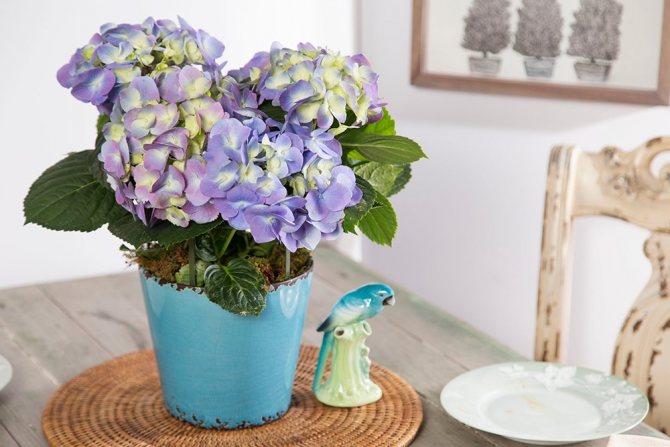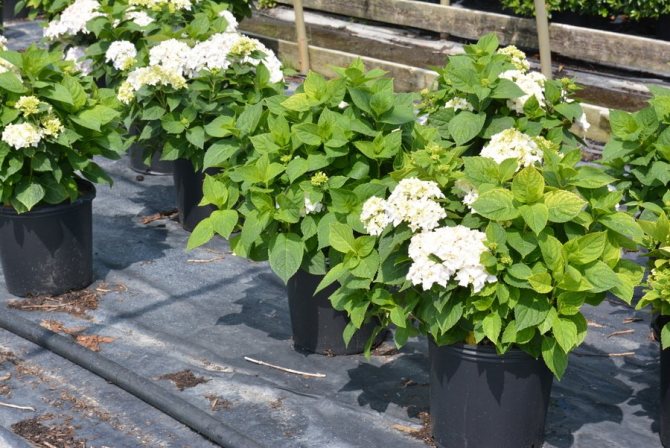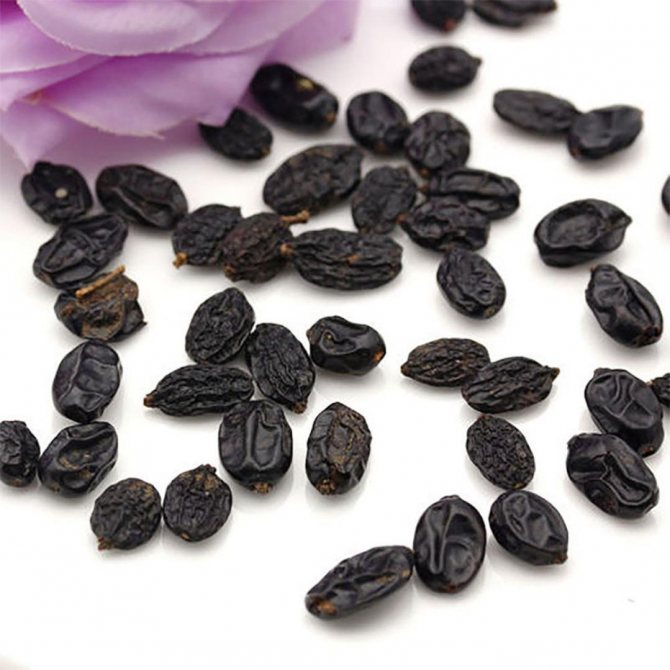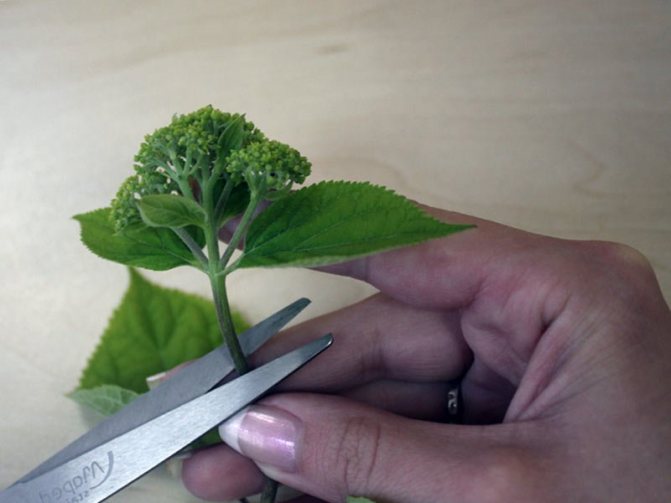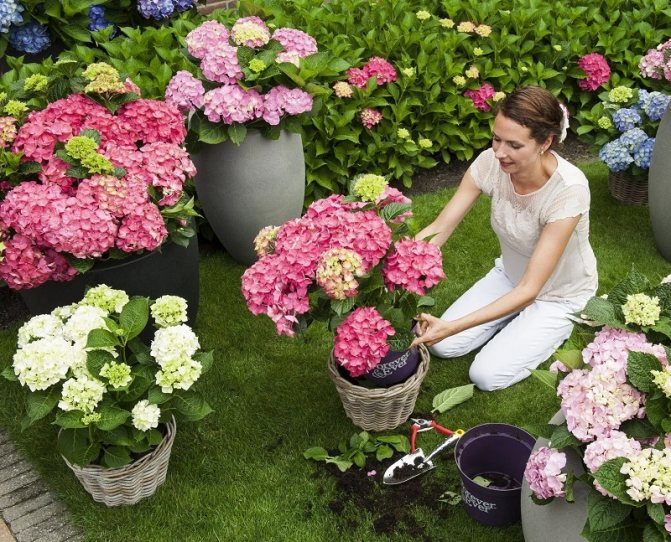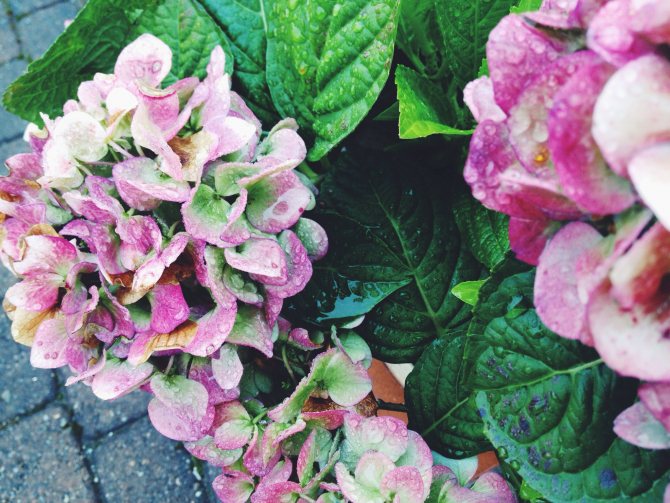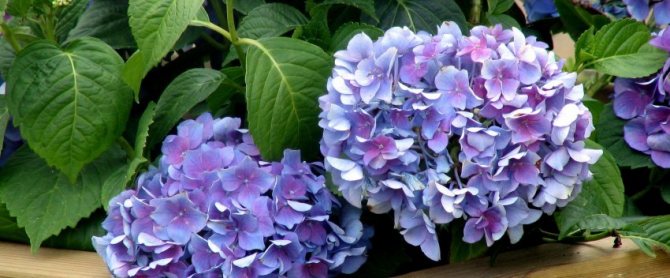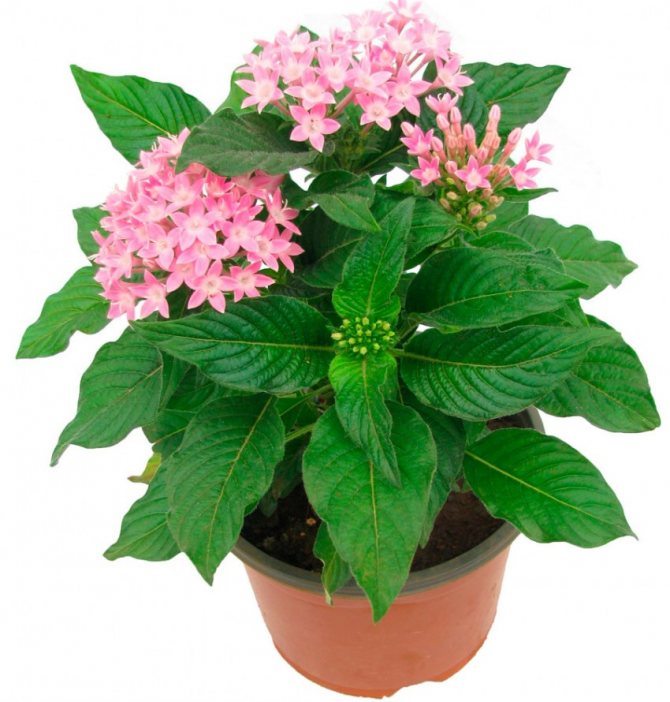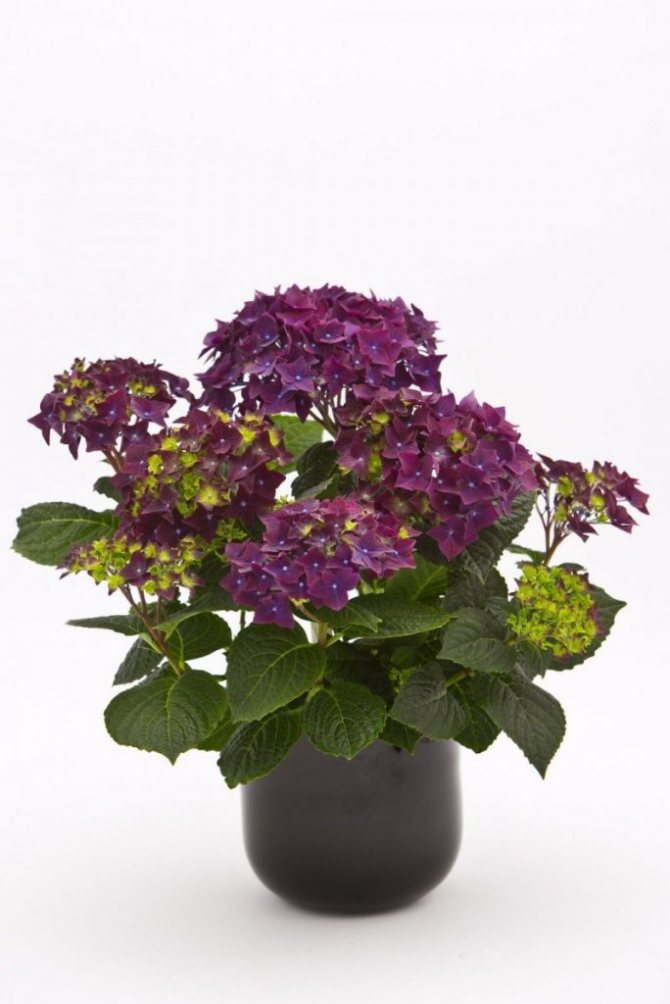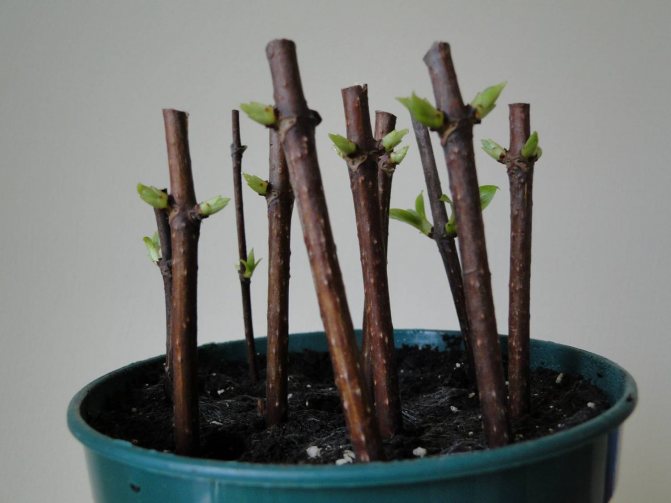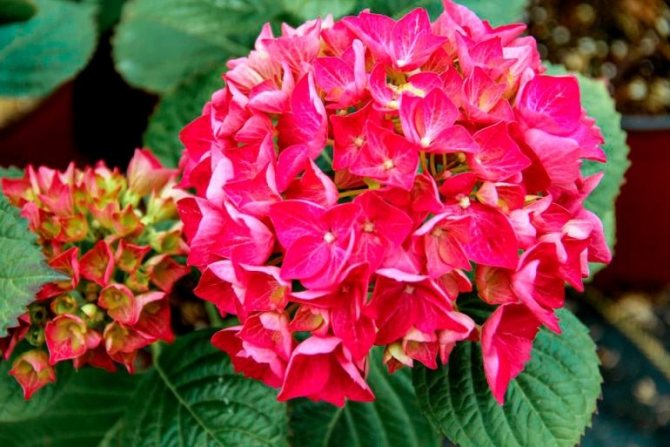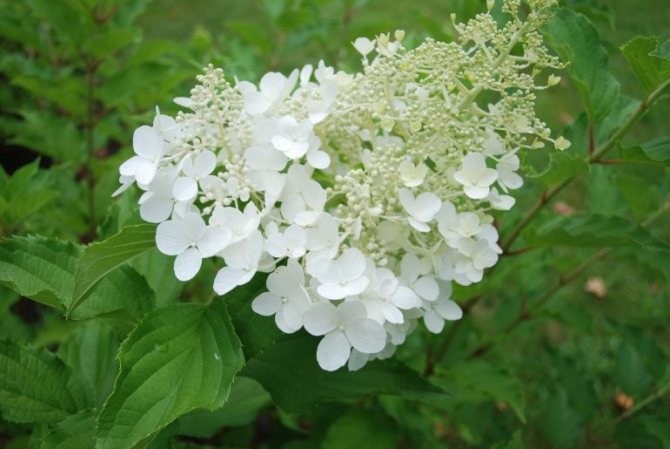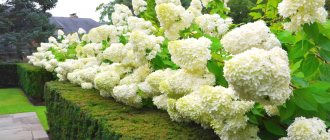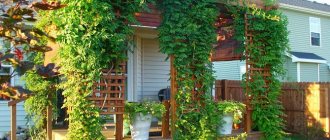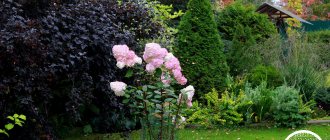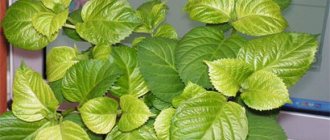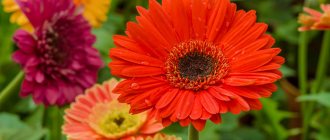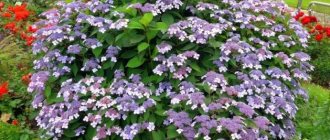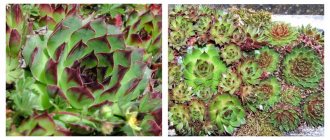Many are wondering how to propagate hydrangea. There are many ways. Some are easier, others are more difficult, but even beginners, using additional information, will be able to master this process.
When breeding a flower, there are many nuances that must be observed. You need to know about its reproduction, temperature regime, watering, feeding. With proper care, the plant will delight the owner with beautiful flowering and its healthy appearance.
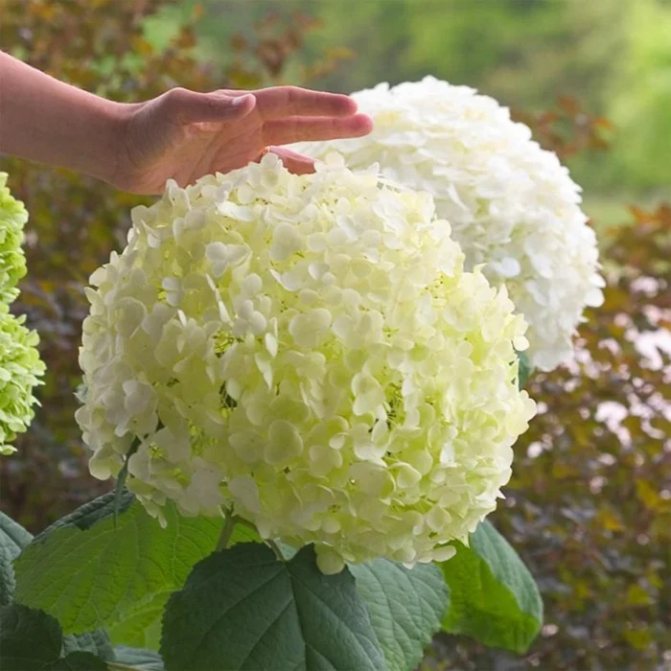
Breeding hydrangea
There are several ways how garden hydrangea reproduces:
- By germinating seeds;
- Root offspring;
- Winter, spring, summer cuttings;
- Layers;
- By dividing the bush.
Flower cultivation methods
Features of the reproduction of hydrangeas of different varieties
The flower has many varieties. Its main subspecies are treelike, paniculate, large-leaved. All of these varieties can be propagated in almost any way. To get the result faster, you need to know which breeding method is best suited.
Tree varieties are less susceptible to low temperatures, they are not sheltered for the winter, they are easy to care for. The best seating position is shaded or semi-shaded. In hot weather, the flower needs optimal watering. The most convenient breeding methods are cuttings, layering. It is possible to propagate a hydrangea of this species by seeds, but the process is long. It is better to purchase planting material in a specialized store. The division of the bush is carried out to immediately obtain adults and flowering individuals.
Paniculate varieties have inflorescences more than 25 cm in diameter, their leaves are long and fluffy. The color palette is very diverse. To prevent the sun from burning the buds, the plant must be planted in the shade. Bushes of this variety grow quickly, so they need to be pruned. The resulting cuttings are used for propagation. This breeding method is a little more problematic than seed or layering.
Important! The flower tolerates temperatures up to minus 30 degrees.
The most beautiful and capricious variety is large-leaved. She has beautiful flowers, large bright green leaves. The bush itself is low and spreading.
Important! Large-leaved varieties do not tolerate low temperatures, so it is better to plant them in containers in order to transfer flowers to another place.
This variety is propagated by cuttings, dividing, layering, seeds, depending on how quickly and what result the gardener wants to get.
How to grow
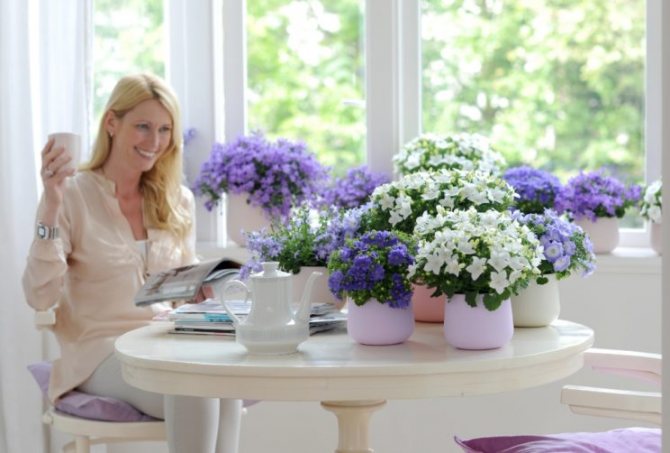

Hydrangea photo of indoor flowers
To date, about 90 varieties of shrubs, trees and vines of this plant genus are known. With proper care, at home this plant can be grown up to 1.5 m high.Although this plant is considered not particularly whimsical, certain important aspects need to be known.
Lighting
In order to enjoy the lush and abundant flowering, you need to make very little effort. This plant will feel great in partial shade. A spacious and bright place at a distance of 3-4 m from the south window would be ideal. It is also necessary to protect it from direct sunlight, as this can lead to the appearance of light spots on its leaves.
But in the shadows, its development will also stop. That is why it is necessary to choose partial shade.This will be the most ideal place for her.
Temperature
In order for the plant to feel comfortable, it is necessary to avoid sudden changes in temperature, as well as drafts. During the flowering period, the optimum temperature for her is 20 degrees. In order for it to delight you with flowering every year, it is necessary that:
- summer temperature was 15-22 degrees
- winter - 7-10 ºC
For wintering, it is worth choosing a dark, cool place, with a temperature of about 7 - 9 degrees Celsius. It could be a basement. Home hydrangea can also winter well on the windowsill, but only if there is no battery under it. It must be remembered that even during a dormant period, it is sometimes necessary to add it.
Such a cool and dark winter for the plant is needed to recuperate after flowering. And if this rule is not followed, then the next flowering will be only in a year. You can return the plant back to normal conditions in February, when buds begin to appear and grow on it.
It must be remembered that the temperature, even in summer, should not be high. And then she will generously thank you with the beauty of her flowering.
Also read about: Its your body, and if you like it then do it
Humidity
This flower is also called hydrangea in another way. Translated, this means "a barrel of water." Its main feature is love for water. This applies not only to watering, but also to air humidity. That is why it should be sprayed frequently.
Dry air can cause the edge of the sheet to dry out. You should also take this point into account when placing it in the room. After all, close proximity to heating devices can negatively affect the condition of the plant.
Healing properties
Hydrangea is considered a medicinal plant and has found application in traditional medicine.
Thanks to essential oils, the water-salt balance is normalized, which has a beneficial effect on the functioning of the organs of the genitourinary system.
Hydrangea also has the following properties:
- anti-inflammatory;
- soothing;
- diuretic;
- pain relievers.
Recommended for use with kidney stones. Has a beneficial effect on joints and connective tissue.
Watering
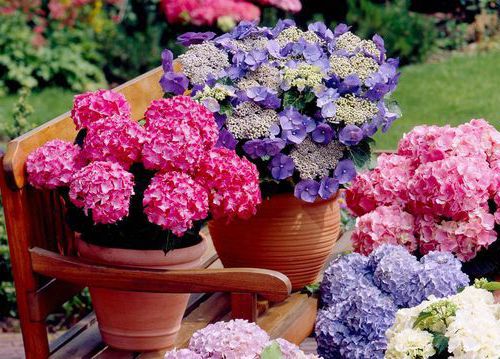

Hydrangea in a pot photo
Since this plant is classified as a moisture-loving plant, this indicates optimal watering. In addition to watering, this plant can also be “bathed”. To do this, a plant with a pot is immersed in water for a certain time, and then the water is allowed to drain completely.
For watering, it is recommended to use settled, boiled or rainwater. You can also freeze it and then use the melt water. With a lack of acidity, hydrangea leaves turn yellow. To avoid this problem, you can use acidified water: add 5 drops of lemon juice to 1 liter of water.
- During the summer season, it should be regular and abundant, as well as frequent.
- But in the winter and dormant period, it should be symbolic. It is cut until the buds begin to develop. Excessive moisture in the soil can lead to rotting and death of the flower.
Features of home care
Hydrangea is more painful than many other plants react to lack of moisture (leaves dry, turn brown). Therefore, watering and spraying should be regular, but just not with cold water.
Various dressings are given to the plant in the spring, when it is already quite active, it wakes up to a new life.
Hydrangea does not like hot sun rays and can even get burnstouching a heated window glass. Avoid these situations by choosing a slightly shaded area for the hydrangea.
You also need to keep in mind that the plant does not tolerate drafts - can catch a cold and get sick.
REFERENCE: CALENDAR FOR HYTENSIA
December and January are winter sleep. February is the time to wake up. March and April are green months. May, all summer, September and October is a flower season. November - getting ready for bed.
Plant soil
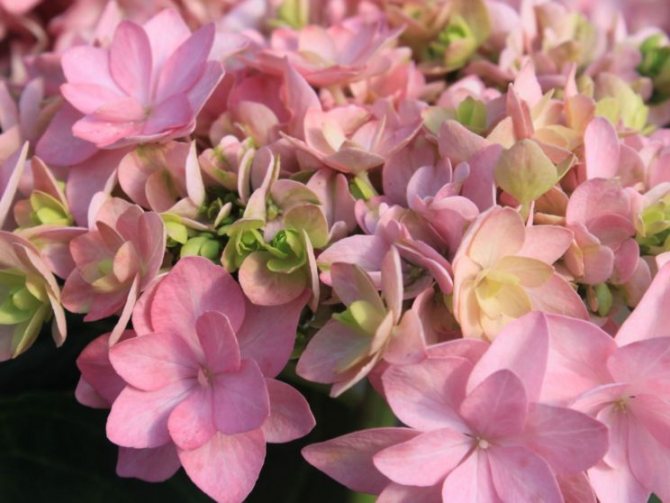

For planting this plant, soil with an acidity level of pH 5.5 is often used. It is recommended to use a mixture of coniferous soil and peat, as well as an admixture of humus and sand. You can also take a fertile mixture of this composition: 1 part of sand to 3 parts of turf and 3 parts of leafy soil. Since it is a moisture-loving plant, special attention must be paid to drainage, which will avoid stagnant water and rotting.
How to plant
Every potted plant requires an annual transplant and hydrangea is no exception. Basically, the plant lives for 3-4 years, then it is necessary to plant a new one. Since her root system is horizontal, the pot should be spacious and wide. In order to minimize stress for the plant, you can use the transshipment method:
- After a layer of drainage has been placed on the bottom of the pot and the plant has been transferred from the old pot to the new one, fill the voids with fresh substrate.
- But you need to be careful not to cover the root collar with soil. After the transplant procedure, it is advisable to cover the soil with peat mulch. It will not allow moisture to evaporate quickly.
- It is advisable to transplant in the fall after the plant has faded. All old peduncles should be removed and the stems should be cut to half their length. And just transplant this field.
Also read about: The actual making of the show sounds decidedly less fun
Due to the high temperature in summer, it is worth paying more attention to watering. Since its insufficient amount can lead to yellowing of the leaves and the death of the plant.
How to feed
Many people ask the question: why does hydrangea not bloom? The reason for this may be insufficient plant nutrition. For this, you can use both mineral and organic fertilizers.
Fertilization:
- Not required in winter. Feeding begins in February, when new shoots begin to form.
- In the spring. During the period of active growth and flowering, this procedure must be carried out once a week. When flowering, you can add potassium permanganate to the water for irrigation.
We transplant and divide the bush


This breeding method is used mainly when transplanting hydrangea.
It can be used for all types of hydrangeas except paniculate. It is best to do a hydrangea transplant in early spring.
First, we water the bush abundantly, then dig it out and thoroughly wash the roots from the soil.
Now you can divide the bush into several parts and immediately plant the divisions in a permanent place, cutting off the ends of the shoots and roots.
Planting and leaving
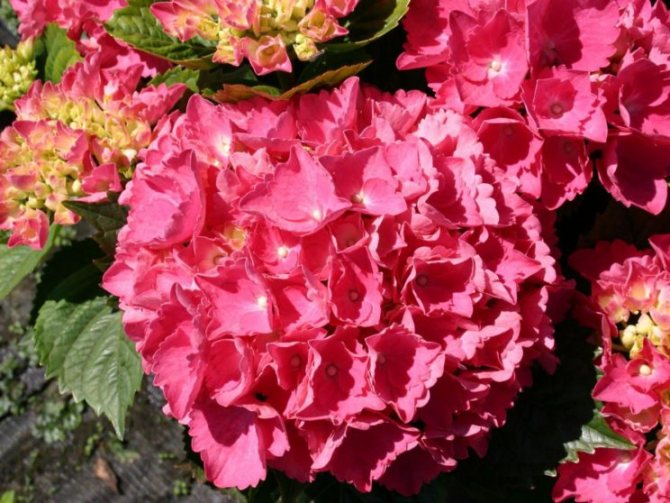

Since this plant is classified as more thermophilic, it can be grown in Siberia mainly as a houseplant. Since the winter is quite severe there, only some frost-resistant varieties can survive it. The optimum age of the cuttings with the greatest survival rate is 5 years. For maximum development, the following conditions must be met:
- slightly or moderately acidic soil
- wind protection
- a mixture of soil: peat, turf, sand, leafy soil.
- good lighting
- seat 50 cm x 50 cm x 50 cm
- abundant watering
- do not cover the root collar
- covering with mulch.
Pruning of this plant is done in the spring before awakening the buds or in the fall after leaf fall. Top dressing should be long and abundant. During the year there are 4 of them: before the movement of the sap, during the laying of buds, July and in the fall during preparation for wintering.
It is imperative to cover the plant for the winter, as without this the plant will die. There are 2 ways:
- Lay out the covering material under the branches, bend the stems and cover. Pour 20 cm of compost or peat on top. Cover everything with foil or slate.
- A frame is made around the bush. The plant is covered with dry leaves and stretched over the covering material.
Propagated by seeds


Hydrangea seeds do not require pre-sowing preparation, so they can be sown directly into seedling boxes.
It is not worth planting seeds in the soil. Immediately after sowing, cover the box with glass or plastic wrap. At the same time, of course, do not forget that the soil must be moist.
Seedlings will appear in about 20 days. Then we grow the seedlings for two years and only in the third year can they be planted in a permanent place in our garden. By this time, our seedlings should be 30-40 cm high.
Keep in mind that only natural seeds reproduce well. hydrangea, and the varieties bred by breeders with this method of reproduction lose their acquired decorative qualities.
Since we will obviously be engaged in the reproduction of varietal hydrangeas, we will consider the following methods in more detail.
Reproduction
There are 3 ways to propagate this plant:
- growing from seed
- cuttings
- dividing the bush
For growing from seeds, it is necessary to take a mixture of sod, leafy soil and humus in equal shares. In addition, it is necessary to add half of the sand and peat. Small seeds are sown in a bowl at the end of winter, without embedding in the soil, covered with glass. Ventilate and moisturize every day.
After the emergence of shoots, we no longer need glass. And after germination, 2 real leaves - dive into the same composition of the earth, only into deep containers. Strong seedlings are transplanted into a 7 cm pot.
Propagation by cuttings is the most reliable way. How to propagate hydrangea by cuttings? It is better to carry out this procedure in January-February. These cuttings will give a bush of 3-4 shoots by the next fall. If you do this in March or April, then the bushes will be single-stem.
Also read about: When she carefully opens it, a black cat hisses at her and
It is better to cut them from basal shoots with 3 internodes. Treat the edge with a stimulant and place in a sandy-peat substrate. Place under light at 18-20 ºC and maintain air humidity at 75-80%. The cuttings are covered with jars and removed daily for airing. Rooting in 3-4 weeks. Then they are transplanted into 7-9 cm peaks.
Propagation of hydrangeas by cuttings in summer is carried out from mid-June to mid-July. Cuttings of hydrangeas in summer are done in the same way as in winter.
Dividing the bush
This method is the simplest one. To do this, with an annual transplant of a bush, it should be divided so that there are growth points and a sufficient number of roots. Shoots are shortened before planting. They sit in separate pots and mulch. If you did this in the spring, then by the fall they will take root well.
Hello dear readers!
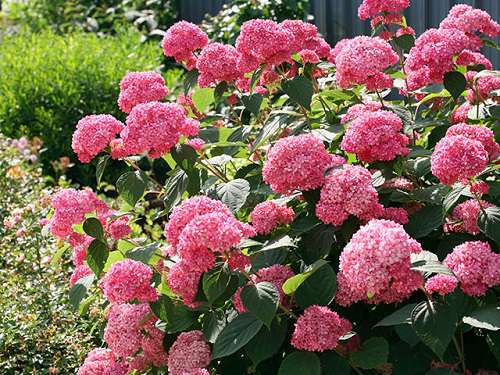

In the previous article on hydrangeas, we got acquainted with its species and varieties, with the requirements for growing these lovely flowers.
The question of how to breeding hydrangea... Of course, the easiest way would be to buy a seedling in a nursery.
But, firstly, it is still an expensive pleasure; secondly, there is not always the variety that you like and, thirdly, the very process of hydrangea breeding is also a very exciting experience.
well, like this how does hydrangea multiply? There are at least five ways to reproduce it: by seeds, cuttings, layering, offspring, dividing the bush.
Let's get to know each of them a little.
Diseases and pests
This plant can be susceptible to pests:
- If there is not enough moisture, aphids or spider mites may appear. A soap solution or an actelik will help to cope with an interval of a week.
- With an excess of moisture, gray rot and downy mildew may occur. Bordeaux liquid and copper-containing preparations and fungicides will help here.
- It also happens that the plant turns yellow. The main reason may be insufficient watering, lack of nitrogen, alkaline soil, chlorosis.The yellowing process can be eliminated by normalizing the rules for caring for the plant.
- It happens that the plant dries up. The reasons may be insufficient spraying, watering. There may also be a lack of nutrients in the soil, traumatized roots. If you adhere to the rules of care, then the condition of the plant will return to normal.
Doesn't bloom, what should I do?
This can happen if you did not let your plant rest in winter. Rest period 70-80 days. Shorten the shoots after flowering and place in a cool, dark place. Water periodically. And return to a warm room in February and it will again delight you with flowering.
In addition, if you want to get flowers with a blue tint, then when transplanting, take acidic soil, and for pink - alkaline. For whites and pale beige - neutral soil. It can change its color due to its ability to accumulate aluminum. If you want to impress everyone, you can do this experiment:
- on one side of the pot, pour in an ammonia-potassium solution of alum (8-10 alum per 2 liters of water) or iron salt. From this, the flowers will turn blue.
- on the other hand, add lime. The inflorescences will be lilac or pink.
As a result, you will get a multi-colored bush in one pot.
It will also be interesting for you to watch a video about caring for room hydrangea:
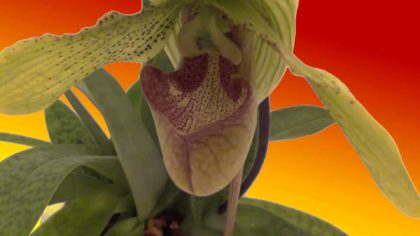

Orchid papiopedilum home care Today in flower shops you can find a variety of hybrids of this plant. Unfortunately, it is impossible to determine their pedigree, on which the care of the papiopedilum orchid largely depends. And the stores themselves buy them under the name "Mix-Orchid". Among the people ... Read more


Orchid oncidium yellow home care photo Oncidium is an epiphytic orchid from the Orchid family, of which there are approximately 750 species native to the Antilles, Central and South America. In the article below, you can familiarize yourself with the features of care in ... Read more
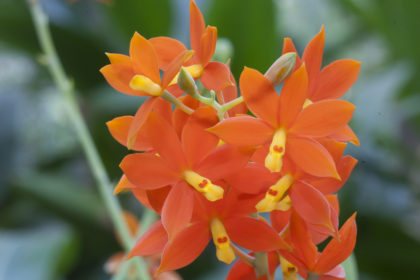

Cymbidium orchid, how to care so that a flower appears from the arrow Cymbidium belongs to the Sympodium species, which currently has over 60 varieties that grow in India, the Himalayas (Nepal), Australia and Thailand. But to find out what to do if the cymbidium does not bloom and what difficulties may arise during cultivation, ... Read more
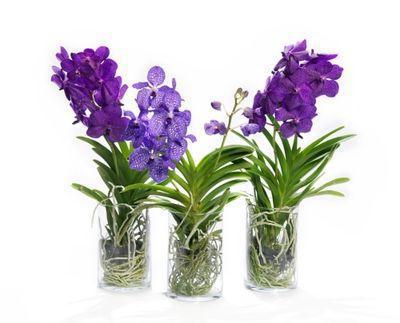

Wanda orchid home care with a Photo Not so long ago, many growers believed that it was not realistic to take care of the wanda orchid at home. In fact, this is far from the case. After reading some of the recommendations, it will not be difficult to grow and care for a wanda. However, some ... Read more


Miltonia flower home care Miltonia (or pansies) belongs to the genus of herbaceous perennial plants from the Orchid family, and includes at least 20 varieties. And in the article below you can learn about miltonia, caring for a plant at home, features of watering, spa ... Read more
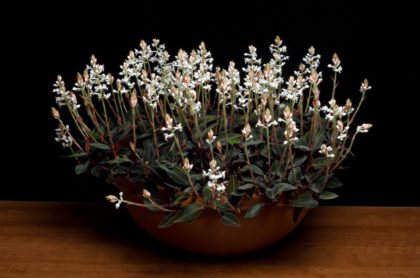

Orchid precious ludisia home care Ludisia is an evergreen plant from the Orchid family native to Thailand, Sumatra, southern China, Malaysia and Vietnam. Read more


Dipladenia home care with photo Dipladenia is a very beautiful plant that can revive and decorate the interior of any home. It looks especially beautiful in the summer landscape design on the backyard. Despite its sophistication and beauty, for some reason it is not popular among sado ... Read more
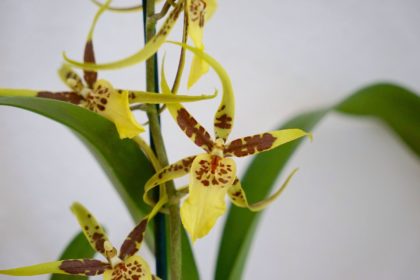

Cumbria orchid home care photos and transplantation Cumbria is a very beautiful hybrid of an orchid, which resulted from the crossing of different types of similar plants. This type of flower is grown by many growers.It was bred specifically for home cultivation. It is worth noting that hybrid orchids are entering… Read more
Varieties of indoor hydrangeas
It is better to choose indoor hydrangeas not by the name of the variety, but by the size of the bushes and the color of the inflorescences. Among them you can find both the brightest and extravagant monochromatic versions of colors, as well as charming watercolor, unevenly repainted cultivars.
The following varieties have become real classics for room culture:
- Compacta Is a low-growing variety with very bright, densely spaced leaves and ball-like inflorescences that change watercolor shades of pink.
- Blushing bride - a beautiful variety with delicate cream shades of flowers and dark leaves, well-branched and medium-sized.
- Ramars mars - a compact, undersized variety with very unusual lilac-blue inflorescences, which are repainted from light green to blue and lilac, darkening over time.
- Early blue - a very beautiful variety in which light green inflorescences gradually turn blue.
- Nikko Blue - a variety with globular inflorescences, which, under the right conditions, can acquire an amethyst shade of dark blue color. The bushes are very sprawling, often drooping to one side.
- Europe - one of the most beautiful bluish-purple varieties with irregularly colored watercolor flowers and very dark, emerald green, heart-shaped, wrinkled leaves.
- Madame E. Mouillere - an unusual narrow-leaved variety with double flowers from three rows of "petals" with a bluish bloom in the center.
- Soeur therese - an elegant variety of white varieties with light lilac and heavenly tints similar to the balls of inflorescences.
- Red link - a warm pink dwarf variety with light yellow centers of newly opened flowers, which seems more graceful due to the slightly loose structure of the inflorescences.
- Magenta - bright pink, with a raspberry shade of large 30-centimeter inflorescences hydrangea with an unusual cut edge of the "petals". Bushes are powerful, about 70 cm high.
- Red sensation - burgundy, rich raspberry variety, which, when grown on acidic soil, becomes wine and purple. Very bright greenery and smaller foliage create a curly effect.
- Prime - a charming pink-red hydrangea with an original yellow color of the buds. Flat inflorescences, as if a continuous shield, lie on very short stems and a cushion of matte dark green leaves. The maximum height is about 25 cm.
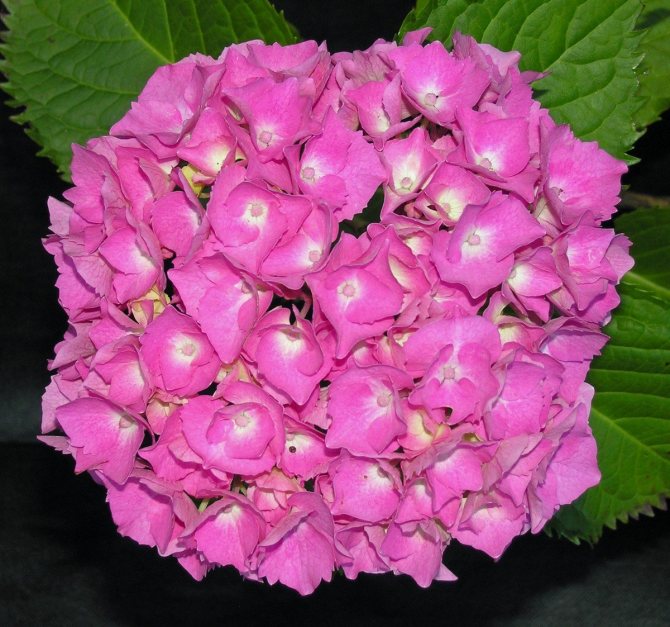

Hydrangea large-leaved 'Europe'.
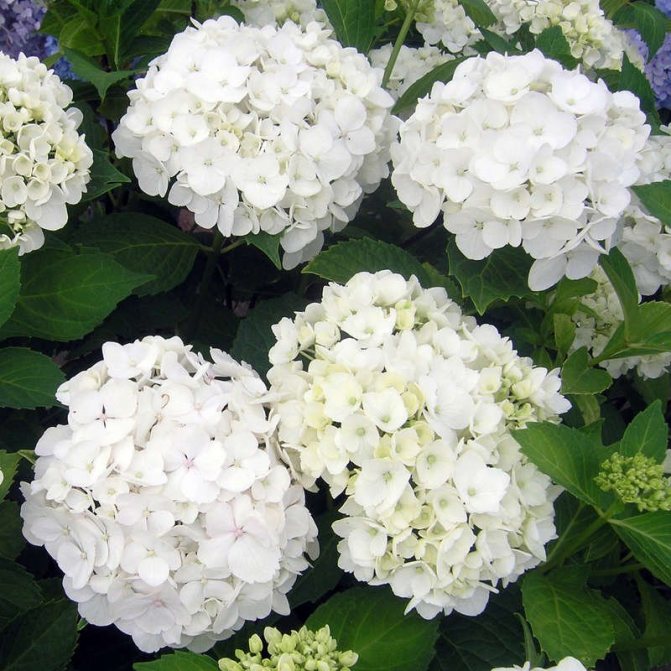

Hydrangea large-leaved 'Soeur Therese'. <>


Hydrangea large-leaved 'Red Sensation'.
Than an autumn transplant is better
Transplanting hydrangeas is possible both in spring and autumn. But the fall period has its advantages.
During the transplant process, there is a risk that the root system may be damaged. In the spring, the plant needs to develop, which is not entirely possible with diseased roots. In the fall, the roots are in a dormant state and will not experience severe stress during transplantation. By the spring, the plant will take root in a new place and will be able to bloom.
Autumn tree hydrangea transplant
A flowering plant cannot be transplanted. In this case, it will not take root well in a new place and may die.
Hydrangea cuttings timing
Hydrangea takes tree-like propagation by cuttings in summer, in the still not lignified state of the trunks. Stems completely covered with gray bark do not take root well, green ones are almost 100% green. The plant has a development peak before flowering, when the buds have already been created. The trunks are still green, and spring cuttings can be easily cut from them. The best piece of the stem is the one taken in early June. A month later, summer cuttings are also cut from the stems of the current year, at the bottom they have part of last year's shoot.
Note! Morning is the best time to cut shoots for cuttings.The stems should be placed in water immediately so that they do not lose moisture.
From seed
The procedure is carried out at the end of winter. It is necessary to prepare the soil from the same parts of humus, leaf and sod land. It is necessary to add 0.5 parts of peat and sand. Place some substrate in a bowl and scatter hydrangea seeds over the surface.
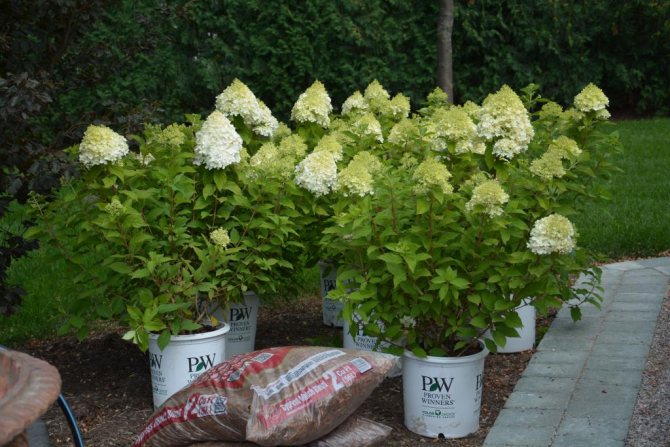

It is necessary to cover the sowing dish with glass. Every day, aeration and moistening of crops from a spray bottle is required so that the soil is always moist, but not wet. The glass is removed after germination. When 2 leaves appear on the seedlings, they are dived into containers with the same soil. It is important to observe the breeding time frame so that the hydrangea has the correct growth and formation.
Advice
Several recommendations about the propagation of hydrangeas from experienced gardeners.
If you do not have your own hydrangea and you need to buy seedlings, make a purchase in the fall. During this period, the largest assortment of high-quality, strong cuttings.
Propagating garden hydrangea by cuttings, special attention should be paid to the treatment of the lower part with a root stimulant. This type of plant takes root worse than others, therefore, without this measure, the chances of success of the operation are greatly reduced.
If you did not have time to purchase a root stimulant, and the cutting needs to be rooted, you can prepare the solution yourself. The recipe is simple: a teaspoon of natural honey is dissolved in a glass of water. After that, the shoot is soaked in a standard way. Honey has disinfecting properties and helps the early formation of callus - a growth from which roots subsequently develop.
So, we got acquainted with five methods of hydrangea propagation. Each of the options considered is quite working and is used: choose the one that seems to you the simplest and most accessible. But as mentioned above, most gardeners prefer cuttings - most likely, this option will suit you.
Helpful information
Learn more about indoor hydrangea care:
If you find an error, please select a piece of text and press Ctrl + Enter.


Large-leaved hydrangea is a real beauty. Juicy green leaves and large caps of bright inflorescences make it a real decoration of the garden, but there is one "but": the heat-loving beauty does not always winter safely in the open field. Very often, even in the presence of shelter, the shoots of the bush freeze slightly and this deprives gardeners of the pleasure of admiring the flowering next season, and this is the main advantage of the plant. However, not everything is so sad and there is a good way to avoid this situation and preserve flower buds - is to grow hydrangea as a pot culture. Of course, this slightly changes the care of her, but, in general, it will not cause much trouble, even more, it is much easier to care for a compact bush. But what exactly needs to be done, we'll talk about it today.
Cuttings
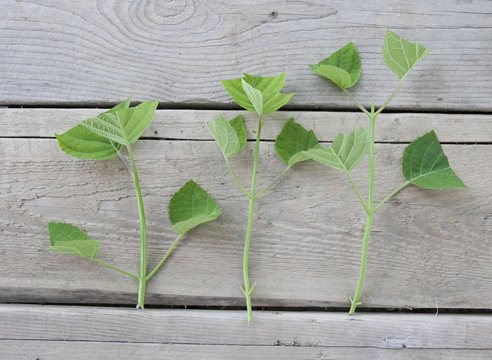

The most popular breeding method for hydrangeas is versatile and suitable for all types of flowers. The best time for propagation by cuttings is the middle of summer, when buds appear on the donor plant.
A cutting (green) suitable for our purpose is the middle part of a shoot that has grown in the past or current year, which has several leaves and buds. Cuttings are usually taken from young specimens - they take root better.
Cuttings are recommended to be cut from the side shoots located at the bottom of the bush. It is only important that the stalk grows in the sun, and not in the shade, otherwise the planting material will not be too strong. A high-quality future seedling should be in good health and not have any damage, the buds on it should be large and developed.
It is recommended to cut off shoots in the early morning in order to preserve maximum moisture in future seedlings. Immediately put into water, after which they start cutting cuttings from the shoots for subsequent rooting.The green top, which has a bud, is removed from each shoot - this part is not suitable for planting.
A part of the shoot without a top is divided into two or more parts (depending on the length of the shoot, the number of buds on it). It is important that each division has at least one bud and a couple of leaves. The leaves are removed from the bottom of each cut, after which the planting material is placed in a solution of a root growth stimulator:
A solution is prepared according to the instructions, after which the cuttings are kept in it for about two hours in a dark place. It is important to ensure that only the stem gets into the solution, and not the leaves.
Attention: you can use as a root stimulant and HB101 preparation, however, planting material should be kept in it for only half an hour.
After treatment with a root stimulant, it is time for the rooting of cuttings. They are planted in a pre-prepared soil mixture consisting of torus (2 parts) and sand (1 part). The soil mixture must be moist. To create the most favorable conditions, the cuttings are covered with glass or plastic transparent jars on top - this measure allows you to create a warm, humid microclimate.
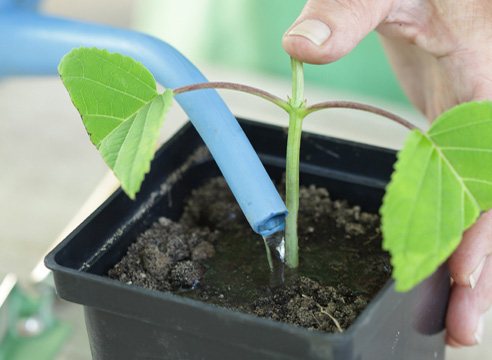

It is necessary to water the seedlings regularly, and more often in hot weather. If the planting material is not covered with cans, it is also necessary to additionally spray the cuttings to ensure a normal level of moisture.
After about 25-30 days, the cuttings take root - a signal for this is the formation of new young leaves. After rooting, the banks are removed. If the plants take root directly in the open field, it is recommended to cover them temporarily with soft material to protect them from recurrent frost. If rooting takes place indoors, this measure can be neglected.
First-year seedlings must be sheltered before wintering. To do this, use fallen leaves, frame mesh structures, agrofibre, spruce spruce branches.
Features of spring cuttings
In this case, cuttings are obtained during the traditional spring pruning of hydrangea. The shoot should be cut from a lignified branch, but it itself should be young, flexible. After cutting, the shoots are immediately placed in water for five days. The water should be changed daily. After five days, you can start grafting shoots for further propagation.
Try to cut the cuttings from the bottom at a 45-degree angle - this will increase the chances of successful rooting of the young plant. It is also recommended to soak the cuttings in a root stimulant solution.
For spring rooting, it is best to plant the cuttings in wet sand. The container is filled with sand about half, after which the cuttings are planted in it.
The lower part of the cutting should be deepened by about 3 cm. After planting, the seedlings are sprayed with water, covered with a transparent film on top. Do not forget to ventilate the planting material every day and periodically moisten the sand.
In order for the seedlings to take root faster, make sure that the temperature in the room is suitable - from +15 to +25 degrees, not lower and not higher. When the cuttings are rooted, they are placed in separate containers. This container should be about 10 cm in diameter.
Young seedlings should be kept in a shaded place so that aggressive sunlight does not damage them. The grown cuttings are planted in the ground when stable warm weather sets in.
Features of winter cuttings
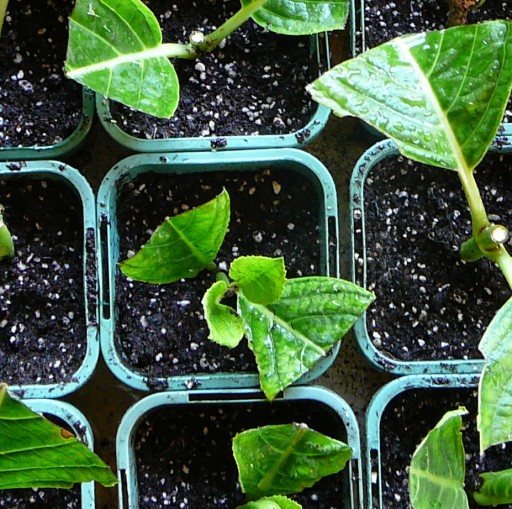

Propagation of hydrangea by cuttings can also be carried out in late autumn - a good option, which gives quite predictable results. Further, the step-by-step technology of the winter version of the procedure.
- The mother plant is dug out of the ground in the second half of October. It is important that there is still time before the first frosts.
- The hydrangea is transplanted into a pot of soil and placed in a dark, cool, but dry basement. If the soil in the pot begins to dry out, it must be watered.
- In the middle of winter (in January), the plant should be moved to a room with a temperature of +10 degrees. And soon it will be possible to observe budding, the formation of young shoots.
- By the end of February, the shoots become long enough for rooting, and they already have 3-4 pairs of leaves.
- Cuttings are cut from the shoots, excluding the top. The cuttings are then kept in a root stimulant solution for 2 hours and planted in a container with nutrient soil (or wet, coarse sand). From above, it is desirable to form a mini greenhouse from the film.
- After a month, the mini-greenhouse is removed (gradually, in layers), after which the rooted seedlings are grown on the windowsill until stable warm weather begins. In mid-May, if the weather permits, you can already plant them in the garden, choosing a shaded place, protected from direct sunlight.
Why do I need a hydrangea transplant
For the abundant flowering of hydrangeas, proper care of the plant is necessary, in particular, correct and timely transplantation.
Such a plant was named after the princess of the Holy Roman Empire.
Before you know when to transplant a hydrangea, you need to know the reason that compels you to perform this action.
A transplant is done when:
- The place where it is planted does not fit the flower, it begins to hurt and practically does not grow.
- The plant is planted in the wrong place and interferes with people.
- The soil under the hydrangea is severely depleted. Everyone knows that a culture can grow in the same place for ten years. But it is still recommended to replant it every five years.
- The indoor plant species has grown a lot, and the pot has become too small for him.
What to do with potted hydrangea in spring?
Around the end of March, the overwintered hydrangea must be removed from the basement, spilled with warm water and fed. If necessary, the bush can be transplanted into a more spacious flowerpot, and after watering, it must be mulched to delay the evaporation of moisture. Before "moving" to the street, the pot needs to find a bright place in the house.
For feeding, it is better to use a special complex fertilizer for hydrangeas of prolonged action (in granules). Coniferous litter or pine bark is well suited as mulch - rotting, it additionally acidifies the soil, and hydrangea loves it.
It is possible to take out a hydrangea into the garden not earlier than the end of April, or even in May, but at first, at night, take it into the house or cover it with agrofibre so that the bush does not suffer from recurrent frosts.
Particular attention should be paid to the location of the hydrangea in the garden, because it does not like too bright lighting, from which the flowers fade. As long as there are no buds, the east side is best. And during flowering, it is worth completely removing the bush under a canopy so that the sun hits it only in the evening.
Hydrangea development calendar
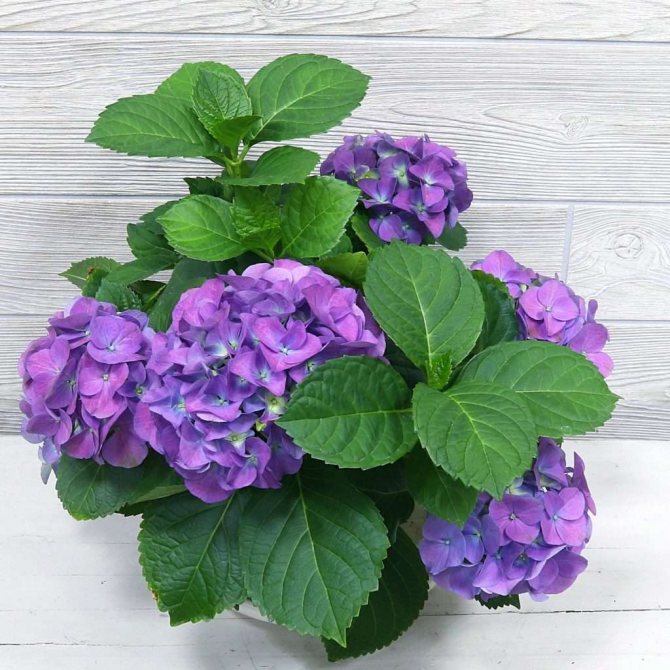

When asked whether it is possible to grow a garden hydrangea at home on a windowsill, there is a consensus - it is possible and necessary. Every gardener should know the approximate calendar of the development of culture:
- December-January the plant is dormant. It is kept at a temperature of 6-9 degrees.
- Awakening begins in February.
- March-April is a period of active development.
- May-October - bud formation and blooming.
- In November, the plant prepares for the winter season.
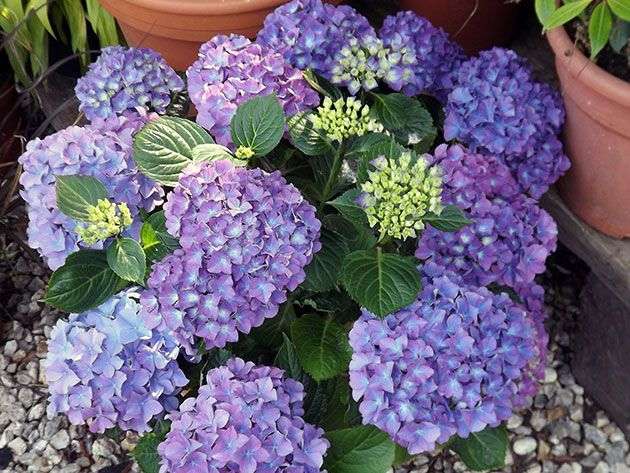

A beginner should know how to grow a bush in an apartment, how to make an indoor hydrangea bloom, how to ensure wintering for it. Only the competent actions of the grower will lead to lush flowering and healthy growth.


A lovely flower that looks like a bride in a cloud of lace can be the best decoration for your home. A flowerpot with it can turn any room into a cozy fabulous apartment. But do we know how to care for a room hydrangea so that it thanks us for a long time with its lush flowering?
Temperature and lighting
At the point where the bud will be located, direct streams of the sun should not come, but the illumination should be full. It is best to place it near a window that faces the west or east side. Thanks to this, development will proceed successfully, and the leaves will retain their color.
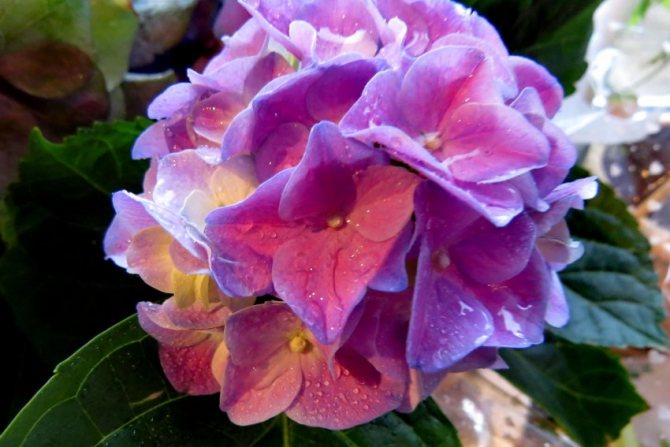

19-22 is the temperature at which she will be in comfort. In winter, it is most correct to transfer it to a poorly lit cool place (up to 9), and put it back in early February
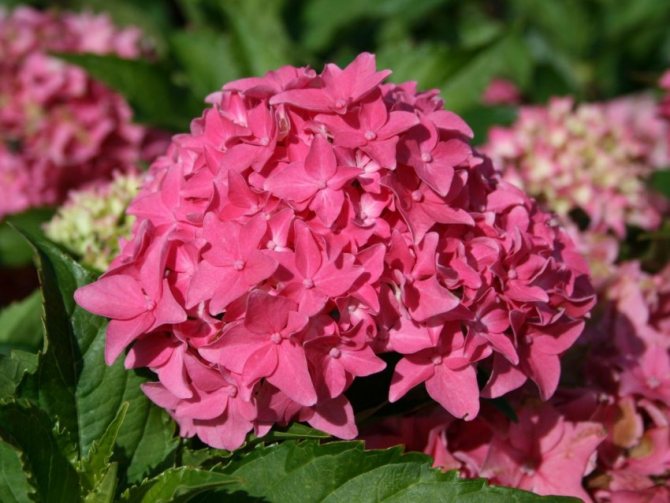

Preparing for the winter period
Indoor hydrangea at home should be prepared for wintering. The change in care is as follows: in the fall, feeding stops, watering is reduced, the hydrangea is transferred to a place where the temperature is reduced.
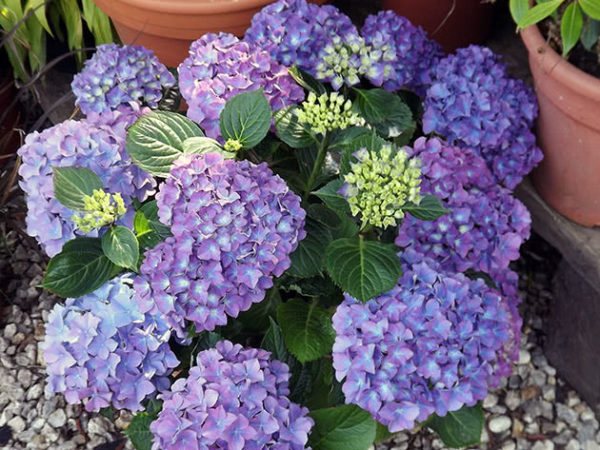

In mid-February, the plant returns to its original place. If you want to photograph the plant while it is hibernating, the photos will not do the same as you would expect even without flowering in the spring.
When to plant seedlings in a permanent place


Planting young hydrangeas in the ground is carried out the next year in the spring. As soon as the plants begin to show signs of growth, the seedlings are regularly watered. When planting, 1 tbsp is placed in the hole. a spoonful of complex mineral fertilizer in granules.
A hydrangea is planted along with an earthen lump. To make it easier to remove the plant from the pot, it has not been watered for the last 2-3 days. After planting the seedling, it is recommended to shorten the shoots by 2/3 of the height - this measure will contribute to the development of a lush bush.
How to choose a flower in a store
Choosing a plant in the store must be careful.
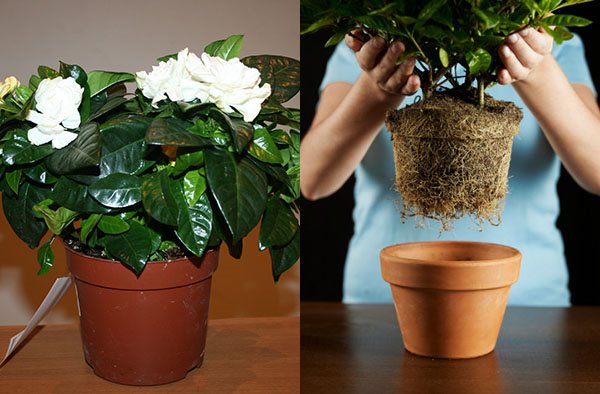

First of all, you need to do the following:
- Examine the stem. It is good if it is dense and green in color.
- Pay attention to the leaves. They should be free of stains and any defects. It is best if the leaf plates are painted bright green.
- Take a look at the flower cap. If it is dense and the flowers are bright, then the hydrangea can be purchased. If the cap is pale, and at the slightest touch the petals fall off, then the plant does not have enough nutrients.
To choose a flower, you need to pay attention to its appearance. The hydrangea should look healthy. If in doubt, it is recommended to refuse the purchase.
Layers
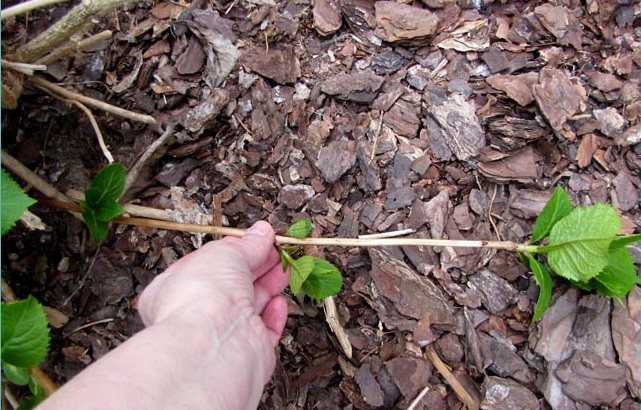

This method is in second place in popularity after cuttings. It is best to propagate a hydrangea using this method in early spring, before the buds have yet blossomed. But sometimes the procedure is carried out in September.
First, they dig up the soil around the mother bush, then level it. Next to the bush, grooves are made in the ground with a depth of 2 cm, into which the lower shoots fit. So that the shoots do not rise, they are sprinkled with a little earth and fixed with spears and other devices.
By the end of the current warm season, the cuttings give several young shoots suitable for further rooting. When the shoots reach a length of 15-20 cm, they are spudded, repeating the procedure every seven to ten days. This is done until the mound reaches 20-25 cm in height. In October, the layers need to be dug, the shoots must be separated from each other. By this period, each shoot reaches about half a meter in length.
For the winter, shoots are buried in, protected with a covering material. And next spring they are planted in the ground for growing. In a couple of years (sometimes a year), young hydrangeas will be ready to be transplanted to a permanent bed.
How to care for hydrangea during dormancy
In winter, hydrangeas have a dormant period. In the middle of autumn, the pot with the plant must be removed to a cool room with a temperature of 5-8 ° C. At the same time, he does not need lighting; for example, a cellar, a dry basement or an insulated loggia will do. Watering is reduced, but it is absolutely impossible to stop it so that the roots do not dry out. The rest period lasts 2-2.5 months, after which the pot is transferred to a warm and bright place for awakening.The change in temperature should be gradual, the flower cannot stand sudden changes.


Hydrangea wintering
When to transplant hydrangea after purchase?
Most flower growers go in search of new green pets after the end of winter. Towards the end of spring, hydrangea also appears in nurseries or flower shops - seedlings are usually sold in containers, and often even together with buds. Having acquired such a bush, you do not need to do anything special with it: in such a pot the plant may well stay until the end of summer, moreover, in the open air, and although the soil is transportable, for the first time it will cope with its task. Naturally, you need to monitor the moisture and prevent the soil from drying out.
But with the arrival of autumn, already at the beginning of September, it will be necessary to prepare the hydrangea for wintering indoors, and at the same time transplant it.
Color change
Hydrangea can range in shades from white to blue. Moreover, the last color is most appreciated. To get inflorescences of various colors, it is necessary to change the acidity of the soil. The most saturated blue tones appear if the soil is acidic. To do this, add various dressings when watering, for example citric acid or a few drops of vinegar.
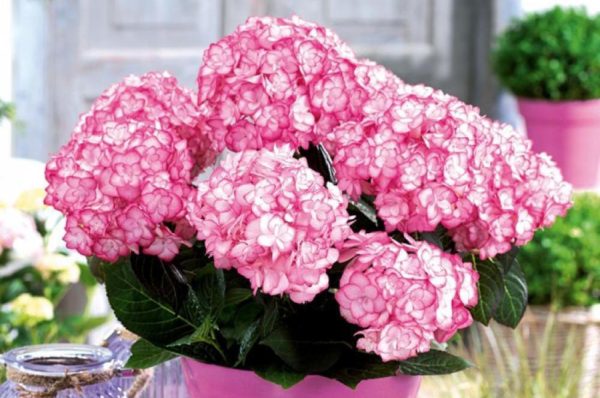

Interesting!
Hydrangea hates touching its flowers. From contact with human hands, flowers begin to fade.
Offspring
In this case, the hydrangea reproduces by young shoots. The method is not bad, however, it requires concentration of attention, accuracy and caution.
- Next to the hydrangea bush, the topsoil is removed so that the roots in this area are exposed. In this case, it is important not to touch the roots.
- The coppice shoot is separated along with a part of the root. It is better to separate several of these shoots at once in order to increase the chances of success of the operation.
- Shoots are planted immediately on the garden bed, as they are sufficiently adapted to the outdoor microclimate.
- In the garden, shoots are grown for 1-2 years, after which they are planted in permanent places.
Pruning
Newbies generally find that indoor hydrangeas don't need pruning. This is a wrong opinion. Pruning is a must. With its help, the bush takes shape, and the plant correctly distributes the nutrients that it receives from the soil.
Pruning is carried out 2 times a year:
- In autumn, when the plant fades. Weak shoots must be removed at the root. Strong ones need to be cut in half.
- In the spring. Strongly elongated weak shoots are removed.
It is allowed to trim the top of the plant. So, the growth of lateral shoots is provoked, and in the future the bush acquires great splendor and decorative effect.
Photo
See more photos of room hydrangea below:
